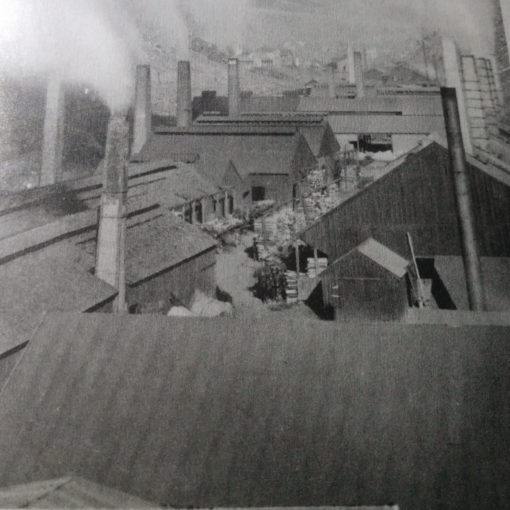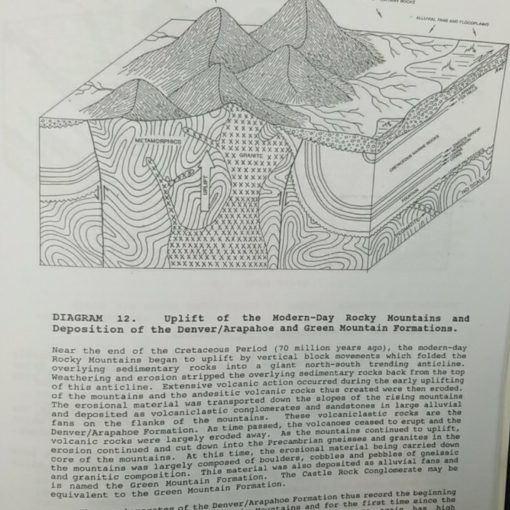Many small-scale prospectors dream of owning their own mining claim but don’t want to face the challenge of locating a new one. Instead, the idea of buying an existing claim sounds more appealing. Is this you or maybe your prospecting buddy?

Buying an existing mining claim on federally managed public lands can be a fast path to accelerate your gold accumulation or just a path to frustration and an empty wallet. If you want to improve your chances of buying wisely, here are some tips for you:
1. Think through what area is reasonable for the claim’s location. How far are you willing to drive from home? How high in elevation are you willing to work? What is the sensible mining season in that area and does that meet your needs? How secluded would you like it to be vs. how easy of access would you prefer?
2. Shop around for available claims. Craig’s List is a common place to find available claims. EBay is another option or a local claims broker. Contacting local clubs to ask about members trying to sell their claims is also smart. With any of these options, be cautious and slow to trust.
3. Evaluate specific available claims. Is there enough water to run your existing equipment or will you need different (expensive?) gear? What does the USFS, or BLM say about the type of equipment you’d like to use in that location? How hard will it be to haul yourself and your gear from the nearest parking spot to the dig site? Is it practical to stay overnight on site?
4. Get on-site to explore the claim. You are buying the rights to the minerals on the land, not the land itself. Interview the current owner about their production, ask to see the records or notes. Sample, sample and sample some more. If your sampling skills aren’t up to snuff yet, bring along some more experienced friends. Pick your own spots on the claim to sample so there’s no chance of being “guided” to a salted hole. Check virgin dirt and any tailings left by historic mining activity. Did the old timer’s leave some behind for you? Also, is the claim properly posted on site with a discovery monument and corner markers? (These markers are not required to be replaced if stolen or destroyed after a claim is filed but you should know if they exist.) Is there anything sensitive just upstream or just downstream of the claim which might lead to conflicts with neighbors? Are there existing environmental damage issues you may choose to avoid?
5. Are you confident you know how to maintain your claim ownership? Do you know the correct county and BLM offices to work with and what forms they require? What about fees and due dates associated with that paperwork? (See comment below for more on this.)
6. Pay a fair price for the claim. What have other claims in the area sold for? Are those claims comparable in terms of gold values, ease of production and access? Does the price of this claim make sense to you given the gold you found while sampling and all the other considerations mentioned above? In the end, pricing a mining claim is an art which takes many factors into account. Just remember that, like any real estate transaction, everything is negotiable so ask for the deal you want!
7. Understand the sales transaction. A “quit claim deed” will need to be filed with the county and the BLM. That document will have to include, as sellers, all the current legal owners of the claim as shown on current county and BLM records. If the sale is priced higher or is more complex, it may be wise to hire a lawyer to safeguard your interests.
As I mentioned in the first paragraph, your other option is to find and file your own claim. This may be previously unclaimed land, or it may be an area where there is a closed claim that you choose to make back into an active claim. Either way, this article I wrote will help.
Issues to look out for:
High water seasons that may severely limit access to mining activity. The upper Arkansas River for example has an artificially high flow from mid-May to mid-August specifically to cater to the recreational rafting community. That high water is a problem for prospectors unless they can schedule their mining for mid-August or later in the year. Similarly, low water seasons could leave you unable to use your preferred equipment during parts of the mining season. This would be similar to the public access area at Cache Creek where autumn water levels are just too low for some types of sluices. Some claims easily accommodate a 4-inch dredge in the spring but by late summer, the water flow is just too low for gear that big.
Access to the claim may be limited by government agencies or private landowners who own land you may need to cross.
If annual paperwork is not kept up in a timely fashion, a claim may be lost. Refiling a claim is an added expense and there is the risk another prospector will file on “your” claim if you fail to maintain all the paperwork properly.
Overlapping claims. Before you buy, check the maps from any nearby claims (available at the state BLM offices on Youngfield St. in Lakewood or at the local county clerk’s office) to check whether any of these claims overlap the claim you’d like to buy. If an overlapping claim was discovered before yours, then they own the mineral rights to the overlapping area.
Whichever way you get your claim, good luck and “find your gold!”
One more thought, if reading all of this has convinced you that it isn’t worth the hassle to buy and manage a claim, I have a good alternative for you. My prospecting guidebook has over 180 public access gold prospecting areas across Colorado Gold Country in it. Grab a copy (click the image of the book) and get to digging!
This site costs money to keep up. The only way it makes money is shopping referrals. If you appreciate the info I’m sharing, please click thru one of my ads the next time you want to shop online. It won’t cost you anything extra and it keeps the site going: Shop at Amazon
Toss me a gift to say thanks at: Tips for Kevin
…thanks!!








10 thoughts on “How to: Buy a Mining Claim -the smart way”
I would love to work on a placer claim
Many of the free, public dig sites I’ve listed here can give you that same experience!
Here’s some key tips from the Treasurenet online forum I thought were worth sharing here:
[QUOTE from Rail Dawg] From the BLM (another lesson learned by us!):
SWITCHING BETWEEN WAIVER AND MAINTENANCE FEE/TRANSFERRING CLAIMS UNDER A WAIVER. Be very careful if switching between a waiver and maintenance fee, and when transferring a claim that is under a waiver.
a) If it is the first time you file a waiver, you must file a Notice of Intent to Hold, on or before December 30 immediately following the filing of the waiver. AND, you must also file an Affidavit of Labor on or before the following December 30.
b) If you filed a waiver for the current assessment year and then choose to file a maintenance fee the next year, you MUST STILL file the Affidavit of Labor by December 30. Example: On or before September 1, 2008, you filed a waiver for the 2009 assessment year. Then on or before September 1, 2009, you pay the maintenance fee for the 2010 assessment year. You MUST STILL file the Affidavit on or before December 30, 2009, for the 2009 assessment year to fulfill the waiver you filed. Paying your maintenance fee on or before September 1, 2009, for the 2010 assessment year does not alleviate this requirement.
c) If you transfer ownership of a mining claim that is under a waiver for the current assessment year be sure to inform the new owner of the requirement to file the Affidavit of Labor for that assessment year. This requirement does not go away because you transferred the claim.
d) If you transfer ownership of a mining claim that is under a waiver for the current assessment year and the new owner does not qualify for a small miner waiver, the waiver is immediately cancelled and the new owner must pay the maintenance fee for that year prior to the upcoming September 1. They must also pay the maintenance fee for the new assessment year that begins on September 1.
– Chuck
I’m new at this. Just trying to do something on the weekends to keep me busy seven days
The good news is you don’t need a claim to have a great time digging for gold! Just start with a few of the sites I share at http://www.findinggoldincolorado.com then consider leveling up to the 450+ sites detailed in my guidebooks. Learn more at http://www.findinggoldincolorado.com/fgicbooks/
Hello Kevin,
I appreciate all of the practical information that you have provided in the article. I have only recently been introduced to the “Mining Claim Purchase”, and I’m fascinated by the the prospect (no pun intended) of having access to BLM or Forest Service Land that also may provide a unique side hustle. BTW I did notice a typo “Pick your own spots on the claim to sample so here’s no chance of being “guided” to a salted hole. ‘here’s’ should be ‘there’s'(?). Thank you for all the information and resources you provide.
JD
Thanks for catching that typo, I’ve corrected it! Good luck finding a claim of your own if you decide to go that way…